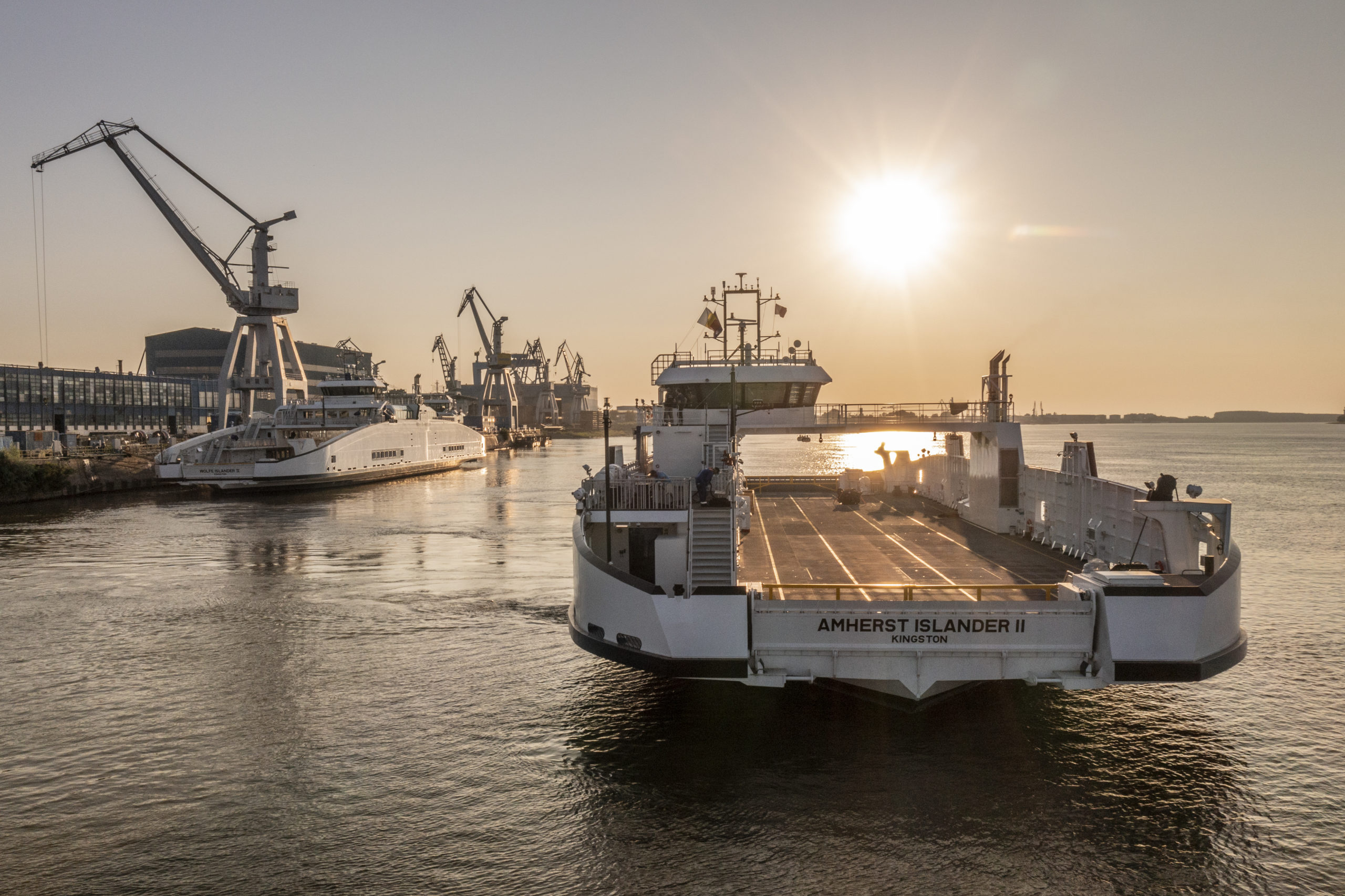Case study
Damen Amherst Islander II & Wolfe Islander IV

The Challenges
The electrification of transportation is expanding at
a fast pace and that includes the maritime sector where a growing list
of countries are requiring the electrification of ferries.
Fully electric ferries reduce emissions – and noise (especially important
within the harbor) – as well as operational costs. Passenger ferries, which
travel relatively short distances, are ideal for fully electric operation.
To meet tight travel timetables, ferries are docked for only a limited time.
For electric ferries, this means they require high-power charging, however,
the electric grids in harbor communities are often limited and unable
to cope with the required high loads for vessel-charging. This was the
situation at Millhaven and Stella harbors, both on the Lake of Ontario,
Canada.
The Solution
The solution was the development of a first-of-its-kind, combined
onboard and onshore energy storage solution enabling hybrid and fully
electric vessels to recharge quickly when returning to port.
Andere Fallstudien
-
As known, the intermittent nature of renewable energy resources, such as wind and solar, can force electrical grids to operate in unfeasible conditions. In order to evaluate the best possible way to overcome this challenge and develop innovative grid solutions, the country founded the Swiss Competence Center of Electrical Infrastructure (SCCER-FURIES).
-
Major cities and regions, such as Toronto, Ontario, are facing the increasingly difficult challenge of generating more clean and efficient power for their growing population centers while maintaining the reliability of the grid.
-
Commercial and Industrial (C&I) electricity customers worldwide are facing pressure to reduce their energy costs. In an increasingly competitive business environment, minimizing and optimizing energy consumption is paramount to being successful.